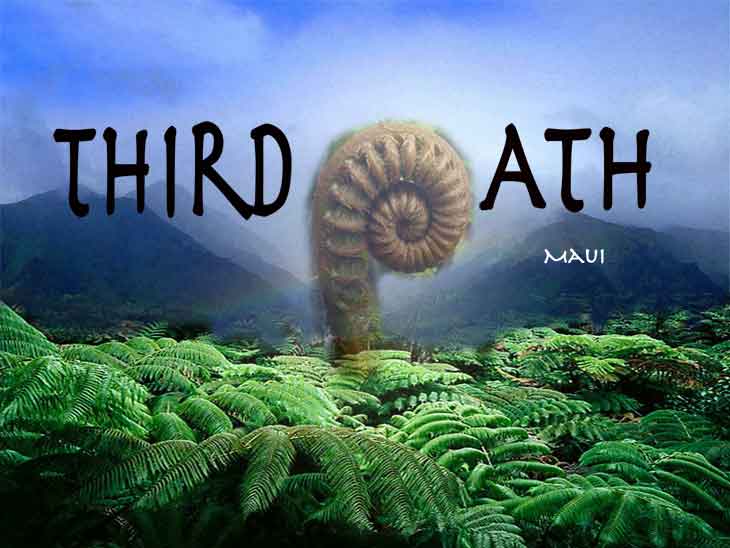Dear Third Path,
This web page is not just digital texts and photos. But it is a place that invokes memory, responsibility and possibility. Even though I am here, on the other side of the screen, at another place in the world, I cannot deny that my being here is affected by you being there. This blog reminds me of meanings that I have learned from you, being in your presences, learning with your stories.
Third Path Maui documented the development of an organic, community vegetable garden as advocacy for reproductive justice. The blog entry that began January 31, 2010, began with a vision and plan to start the garden. There was doubt because funds to get the garden started did not arrive. Yet, the garden continued. Stacey R-C blogged tips and strategies for creating the garden. She worked with others in Third Path Maui, their resource connections, to get seedlings, and how to best grow each plant. She took pictures of people tilling the soil, wrote the benefits of mulching, described healing properties of particular plants, and took more photos of the plants growing into beautiful, edible food.
This process of growing local food is as a symbolic and real act of resisting domestic violence. Domestic violence is a cycle of violence when the abused continues to be dependent on their abuser. Leaving the abusive partner can be a way to end the cycle of violence. However, not all abused find it easy to leave their abusers because of dependencies—like economic, emotional and familial. When Third Path came together, they envisioned local, women of color perspectives in understanding why domestic violence takes place. Women on Oahu saw how Hawaii’s dependence on foreign industries like the military and tourism industry investments were some reasons why we cannot self-determine our existence. Women on Maui added that environmental sustainability was a way we could move toward self-determination.
Growing the community garden was the mixture of those two ideas. Due to Hawaii being widely recognized as the 50th state in the U.S., the lands are thought to be governed by U.S. law, which prioritizes capitalist ownership of land. Profit oriented food development, such as sugar cane and pineapple industries, use large tracks of land to tie Hawaii to the global economy. Third Path Maui’s choice to develop a community garden was a way to intervene in the domestic violence between Hawaii and the global market, inter-personally between people, and people’s relationship to themselves.
For so long, we were disconnected: dependent on getting food at commercial grocery stores, taking for granted where the food came from and how it affects our bodies. For so long, we were disconnected from our histories to learn how we came to be this way. Capitalist expansion was the underlying value system that propelled colonization across the Pacific and began the ripple of insecurity many generations ago. The transformation of Hawaii into a U.S. territory began with the illegal overthrow of the Hawaiian kingdom in 1893. The U.S. took Hawaii in order to take Guam and the Philippines after the Spanish-American war. For so many years, peoples in the Asia-Pacific had their lands taken from them, and then the people were taught to be dependent on that abusive order.
In abusive relationships, people become impatient with each other, expecting things to be a certain way. And when they are not, that’s when the violence comes. When we begin to grow our own food, we build relationship to our land and we learn the process of being patient and listening to the way the plant grows. Building the skills of patience and listening helps us hear each other more, and learn to grow with each other in ways that feed our souls.
Thanks for helping me learn these connections,
Ellen
















